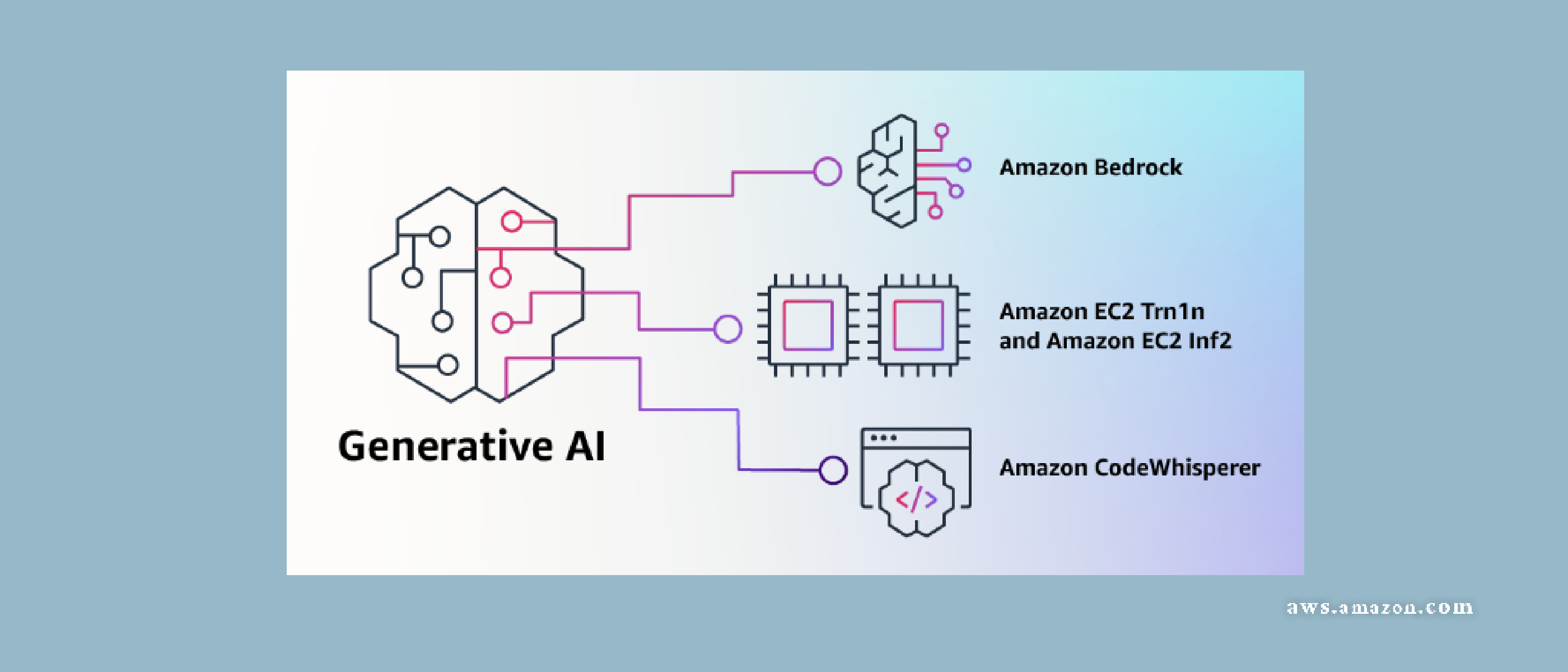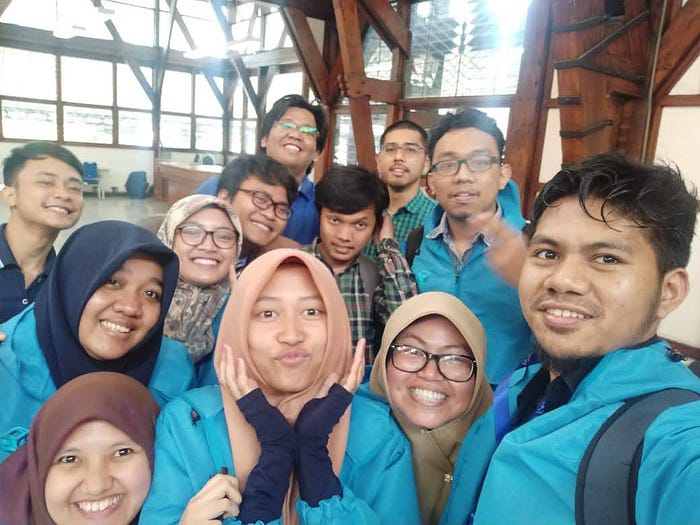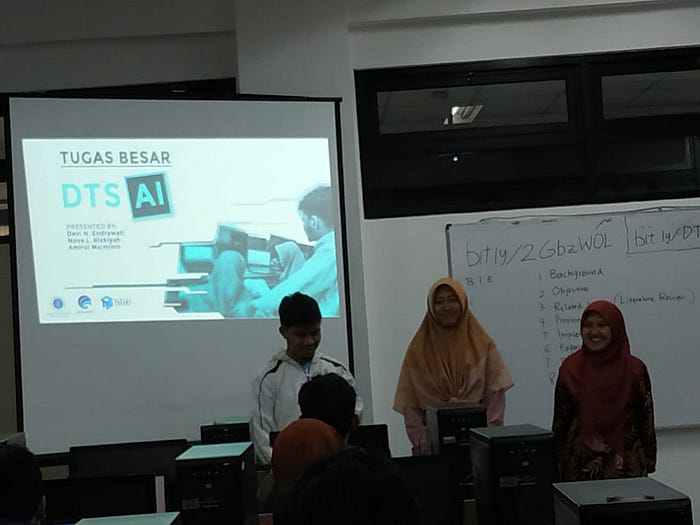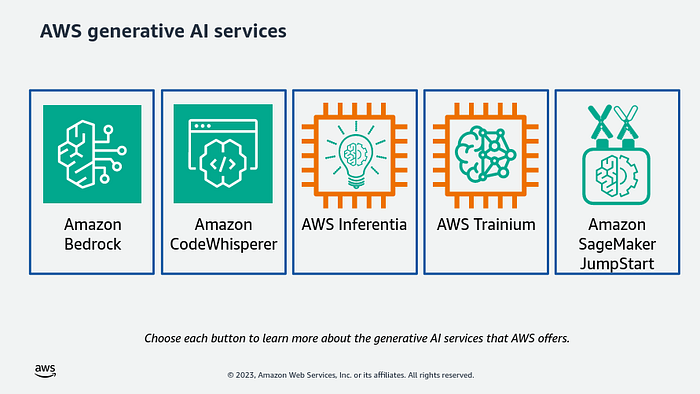Mastering AI in Cloud Computing, Embrace Innovation and Practical Skills!
Posted on June 18, 2024 • 7 min read • 1,347 words
After graduating with a master’s degree in physics from one of Indonesia’s top universities in 2019, I saw an opportunity to work in the tech industry,
even though I didn’t have a background in computer science. At that time, Indonesia was experiencing a startup boom, and some of my physics classmates from my bachelor’s degree were able to secure jobs in these companies. Despite my initial doubts, I decided to start learning. Around the same time, a friend invited me to participate in a training program funded by Indonesia’s Ministry of Information, focusing on Cloud Computing using Amazon Web Services (AWS) and Machine Learning (ML). Although I was hesitant at first, I thought this would be a great opportunity to explore a field outside of physics that could potentially lead to my desired career.
After a series of selection processes, my friend and I were accepted into the program. We were mentored by experts in the field. This was my first exposure to Cloud Computing, and I began learning through AWS Educate, where I gained hands-on experience with essential cloud basics.
AWS Educate served as my first platform for learning cloud computing in 2019.
Learning Cloud Computing for the first time with unfamiliar terminology was quite challenging. Given that the training lasted only a month, I tried to absorb the information gradually, starting with the simplest concepts: understanding all the cloud terms provided, such as availability, latency, fault tolerance, database, server, networking, storage, and more. At the end of the program, we presented simple projects we had created and celebrated our graduation with all the participants.

me and my friends
AWS Educate was the first platform that guided me in learning about cloud computing. Although it wasn’t as advanced as it is now, AWS Educate managed to spark my interest in continuing to learn about the cloud, even as a beginner. The system was very well-organized, making it easier for me to learn in a structured, gradual, and step-by-step manner.
Difference Between Traditional AI and Generative AI
In addition to cloud computing, my friends and I also learned about machine learning. Our project involved determining the best model for a simple case study: hospital readmission. Hospital readmission refers to patients being readmitted after being discharged from the hospital. A higher readmission rate indicates lower quality of hospital care. We used data from 130 hospitals in the United States. After testing various models, we found that the random forest model was the most effective for handling large datasets. This approach is referred to as traditional AI.
Traditional AI focuses on specific tasks and predictions based on the input data. It excels at analyzing structured data, identifying patterns, and making decisions based on existing data. On the other hand, Generative AI, such as GPT-3, is designed to generate new content. It can create text, images, and other media based on the patterns it has learned from vast amounts of data. While traditional AI is excellent for tasks like classification and regression, generative AI shines in creating new, human-like content and finding creative solutions to complex problems.

presentation time
Traditional machine learning models perform tasks based on the data you provide. They can make predictions such as ranking, sentiment analysis, image classification, and more. However, each model can perform only one task, and to do it successfully, models need to be carefully trained on the data. As models are trained, they analyze the data and look for patterns. Then, these models make predictions based on these patterns, exactly like the project we worked on. Since traditional AI has very limited uses (and tends to be complex because we need to model it ourselves repeatedly and require very large datasets), companies worldwide are racing to develop generative AI.
In 2024, AWS Educate introduced Introduction to Generative AI courses. If in my previous writing, I said, “Would you like to learn with me?” Did you take this class? Because I’ve completed 100% of the courses and received a badge
Generative AI courses:
- AI generators are powered by machine learning foundation models. These models can produce content. This AI-generated content is editable, allowing you to make necessary modifications that meet your needs.
- Foundation models differ significantly from traditional machine learning models in their size, versatility, and ability to perform multiple tasks without needing to gather labeled data and train multiple models separately.
- Prompt engineering involves inputting a prompt into the model, which generates a response known as inference displayed as the output. However, if the output isn’t satisfactory, you may need to adjust the prompt or provide task examples. Prompting will become an important skill; the better we train ourselves to provide the right prompts, the better the AI results will be.
- What AWS services are related to generative AI? Here are the slides.

slide in Introduction in Generative AI courses
Amazon Bedrock
- Explanation: Amazon Bedrock provides access to various large language model (LLM) models from Amazon and other providers through an easy-to-use API, enabling developers to build generative AI applications without managing the model infrastructure.
- Analogy: Imagine a large library with the best books from various authors, where you can borrow the book (model) you need and return it after use.
Amazon CodeWhisperer
- Explanation: Amazon CodeWhisperer is a tool that uses AI to provide real-time code suggestions as developers write code, enhancing productivity by offering snippets, functions, and logic based on the context of the code being written.
- Analogy: Think of yourself as a writer with an intelligent assistant beside you, suggesting the next words or sentences, enabling you to write faster and more smoothly.
AWS Inferentia
- Explanation: AWS Inferentia is a specialized accelerator chip from AWS designed to speed up the inference of machine learning models, the process of running trained models to make predictions or decisions.
- Analogy: Imagine having a super-fast calculator specifically designed to solve certain mathematical problems, allowing you to solve many problems in a short time.
AWS Trainium
- Explanation: AWS Trainium is a specialized accelerator chip from AWS that speeds up the training of machine learning models, reducing the time and cost required to train complex AI models.
- Analogy: Think of AWS Trainium like a personal gym with advanced equipment for elite athlete training, enabling them to train more effectively and achieve peak performance in less time.
Amazon SageMaker JumpStart
- Explanation: Amazon SageMaker JumpStart provides pre-built solutions and ready-to-use models to accelerate the development of machine learning applications, including pre-trained models and tutorial notebooks for various use cases.
- Analogy: Imagine wanting to build a table and receiving a complete assembly kit with all parts ready to be assembled and a step-by-step manual, allowing you to follow instructions without needing to cut or measure anything.
As someone learning and working in the field of Cloud computing, I’ve had concerns about AI potentially replacing humans. While that fear may be exaggerated, there’s value in understanding how AI works by taking these easily understandable courses. As engineers/developers, it allows us to solve problems faster than in previous years. AI can greatly enhance our work if used correctly. This course is a gateway, and despite starting my cloud journey in 2019, I’ve learned many new things from it.
Conclusion
Traditional AI models are typically built and trained for specific tasks with datasets tailored to those tasks. For instance, a facial recognition AI model would be trained on numerous facial images. Such models excel in their specific tasks but lack flexibility for different contexts without significant retraining. In contrast, foundation models in Generative AI are versatile and can be adapted for various tasks with minimal adjustments, similar to how a universal mold can produce different products with slight modifications.
Next, I recommend another interesting course on AWS Educate to readers, focusing on one of AWS’s AI services, Amazon Bedrock. Here are the steps:
- Visit www.awseducate.com
- Choose Introduction to Generative Amazon Bedrock.
- Complete the course in approximately 0.75 hours.
- Share your experience!
So, Explore the future of AI in cloud computing and unleash your potential today! Happy learning!
writing with love,
Nova Lailatul Rizkiyah